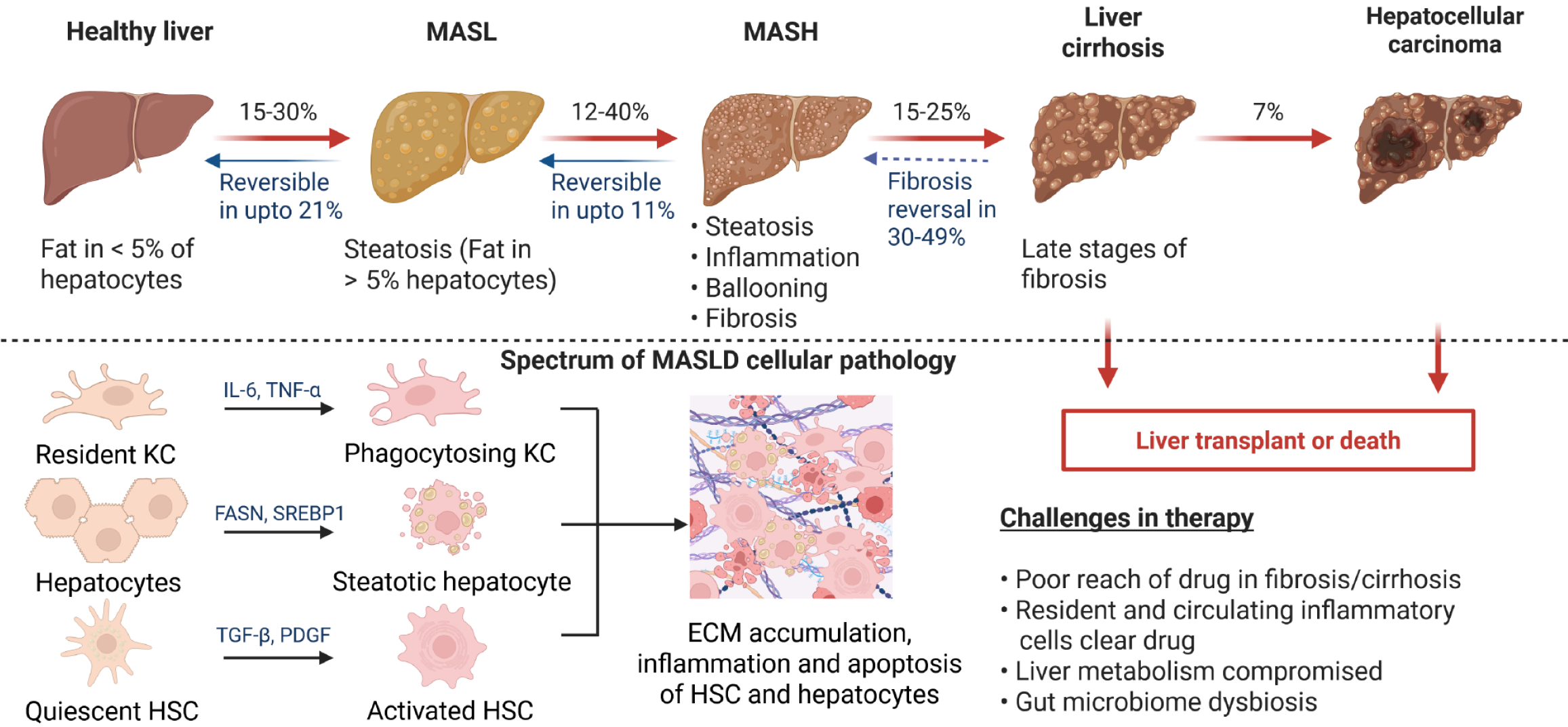Copyright
©The Author(s) 2025.
World J Gastroenterol. Jul 21, 2025; 31(27): 109105
Published online Jul 21, 2025. doi: 10.3748/wjg.v31.i27.109105
Published online Jul 21, 2025. doi: 10.3748/wjg.v31.i27.109105
Figure 1 Spectrum of pathology of metabolic dysfunction-associated steatotic liver disease.
Regular intake of high fat loaded food can trigger the development of metabolic dysfunction-associated steatotic liver in 15%-30% of healthy population, which is characterized by steatosis, implying fat in > 5% hepatocytes and is reversible in up to 21% of patients. In 12%-40% of patients metabolic dysfunction-associated steatotic liver may progress towards the more aggressive form of the disease metabolic dysfunction-associated steatohepatitis (MASH), which is characterized by steatosis, inflammation, ballooning of hepatocytes and fibrosis. MASH is reversible in up to 11% patients. Among 15%-25% MASH patients there is high risk of the development of liver cirrhosis characterized by severely compromised liver function and 7% of cirrhotic patients may develop liver cancer. The only therapeutic option for liver cirrhosis and liver cancer is liver transplantation. At the cellular level, hepatocytes develop steatosis under the influence of enzymes such as fatty acid synthase, and sterol regulatory element binding protein 1. Persistent steatosis induces hepatic inflammation involving immune cells including Kupffer cells. Long-standing inflammation will activate quiescent hepatic stellate cells to cause fibrosis up to cirrhosis by excessive synthesis of extracellular matrix proteins. Cirrhosis may give rise to hepatocellular carcinoma. The interplay of different hepatic cells culminates in the pathological features of MASH. MASL: Metabolic dysfunction-associated steatotic liver; MASH: Metabolic dysfunction-associated steatohepatitis; MASLD: Metabolic dysfunction-associated steatotic liver disease; ECM: Extracellular matrix; HSC: Hepatic stellate cell; KC: Kupffer cells; IL-6: Interleukin-6; TNF-α: Tumor necrosis factor-alpha; FASN: Fatty acid synthase; SREBP1: Sterol regulatory element binding protein 1; TGF-β: Transforming growth factor-beta; PDGF: Platelet-derived growth factor. Created with a license from BioRender.com.
- Citation: Khurana A, Hartmann P. Gut microbiome-specific nanoparticle-based therapeutics for liver diseases. World J Gastroenterol 2025; 31(27): 109105
- URL: https://www.wjgnet.com/1007-9327/full/v31/i27/109105.htm
- DOI: https://dx.doi.org/10.3748/wjg.v31.i27.109105









